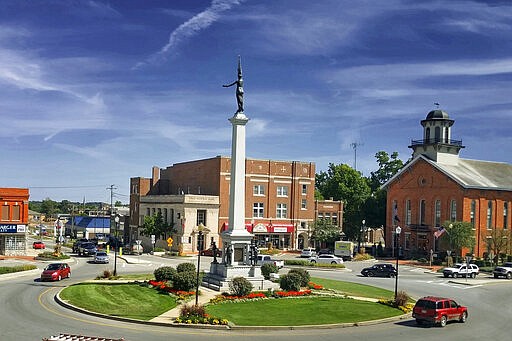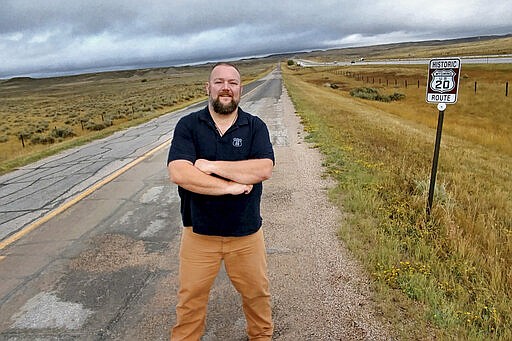Group makes headway in Iowa on old Route 20 designation
Margery A. Beck | Hagadone News Network | UPDATED 5 years, 9 months AGO
OMAHA, Neb. (AP) — Visitors to the small northeastern Iowa city of Dyersville can soak up all the Americana that embodies a baseball diamond built amid cornfields for the 1989 movie “Field of Dreams.” At Fort Dodge, they can experience a replica of 19th-century fort life. And in tiny Cushing, they can have a cold brew and tacos at the Old 20 Bar and Grill.
But to get there, they have to get off U.S. 20 and take the old Route 20 — a meandering road that spans 3365 miles (5,415 kilometers) and a dozen states, from Boston on the East Coast to Newport, Oregon on the West Coast.
A national group hoping to encourage travelers to visit the small towns and take in the scenic views all along the old route has been working for years to get it designated as a historical auto route, much like the better-known Route 66. While the effort is gaining traction in Iowa, the Historic Route 20 Association has faced obstacles because the effort takes cooperation from so many jurisdictions.
“Almost every town has a story to tell,” Bryan Farr, president of the Historic Route 20 Association in Chester, Massachusetts, said. “That’s our mission: To raise the profile of the communities, small businesses, mom and pop shops and historic sites along the original 1926 alignments of U.S. Route 20.”
The effort in Iowa is nearly complete, and could serve as a model for other states. Farr has gotten all 35 cities and towns and 11 of 13 counties along the route in Iowa to pass resolutions of support. He expects the last two counties to give their approval this spring.
“As soon as that happens and he submits the paperwork, it’s a done deal,” said Tim Crouch, state traffic engineer with the Iowa Department of Transportation.
State workers would then place more than 100 historic markers along the entire 333 miles (536 kilometers) of the highway in Iowa.
“It will be the longest such historic route in Iowa,” Farr said, “stretching from the Mississippi River to the Missouri River.”
But other states, like Indiana, have implemented a moratorium on new historic roads. In Ohio, Farr wrangled cooperation from some local governments, only to see those plans dissolve as elections ushered in new officials.
“In Massachusetts, we have a bill pending to designate old 20 as an historic auto highway,” Farr said. “In New York state, we’ve just only gotten started with the process.”
In Iowa, Cushing officials began calling Farr after seeing a news story six years ago about the Route 20 plans. Several communities in Iowa, as well as other states, have already placed Historic Route 20 signs along roads.
The process has already produced results for one Iowa community. On applications for street improvements and equipment funding, Earlville city clerk Linda Gaul was able to say that the town is located along an area considered to be a historic route.
“We were approved for both,” Gaul said.
Farr launched the effort, and the association, in 2012, after learning that he had missed dozens of sites by sticking to the four-lane thoroughfare during a road trip.
While U.S. 20 now bypasses most towns and small cities, the original route does not. It also offers scenic views along Lake Erie in Ohio, Pennsylvania and New York and state forests in Massachusetts. To the west, it takes travelers through Nebraska’s Sandhills, the western terrain of Wyoming, right up to the entrance of Yellowstone National Park, before passing through the southwest corner of Montana, the mountains of Idaho and forests of Oregon, ending within sight of the Pacific Ocean. Some original portions of the route remain unpaved.
In Iowa, the association will pay $100 per historic route sign installed by state crews, Crouch said.
The association’s work is funded through grant writing, fundraising, private donations and memberships. Its board of directors is made up of volunteers, and Farr works as a bartender to pay his bills.
The effort is Farr's passion. And while it's been slow going so far, he expects it to speed up as soon as Iowa’s cross-state route is designated.
“The idea was always to have one state complete,” he said. “Then we could go to Massachusetts or Nebraska or Oregon and say, ‘This is what we’ve done here.’ Iowa can be a model.”
ARTICLES BY MARGERY A. BECK

Group makes headway in Iowa on old Route 20 designation
OMAHA, Neb. (AP) — Visitors to the small northeastern Iowa city of Dyersville can soak up all the Americana that embodies a baseball diamond built amid cornfields for the 1989 movie “Field of Dreams.” At Fort Dodge, they can experience a replica of 19th-century fort life. And in tiny Cushing, they can have a cold brew and tacos at the Old 20 Bar and Grill.

Ricketts: Omaha sees 2nd virus case of unknown origin
OMAHA, Neb. (AP) — Public health officials in Omaha have confirmed a second COVID-19 case whose origins can't be traced, Gov. Pete Ricketts said Wednesday, as Nebraska officials scrambled to increase the number of tests they can conduct each day.

Nebraska OKs $83.6M virus package as more cases surface
LINCOLN, Neb. (AP) — Nebraska approved an $83.6 million emergency relief package Wednesday to help public health officials respond to the coronavirus pandemic, as the number of cases continued to rise and Lincoln officials ordered some businesses to close and restricted how others can operate.



